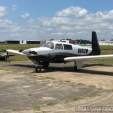Does Anyone Land their F or J with No Flaps?
-
Members Online
- rahill
- C111024S
- donkaye
- bigmo
- Skates97
- Bryan G
- turbofan
- a.klein
- catchman86
- markm20b
- Danb
- Marc_B
- TCC
- divedoctor1
- Parker_Woodruff
- Utah20Gflyer
- spistora
- Ragsf15e
- Greg Ellis
- ta2too
- EricJ
- gabez
- Medicpilot
- 201er
- Scottknoll
- Boboli
- Bpvlbv
- Ron McBride
- redbaron1982
- M20F-1968
- ohdub
- varlajo
- N201MKTurbo
- NickG
- eman1200
- Supereri73
- Kawabob
- ToddCC22
- ericrynehess
- Rmnpilot
- Mark89114


Recommended Posts
Join the conversation
You can post now and register later. If you have an account, sign in now to post with your account.